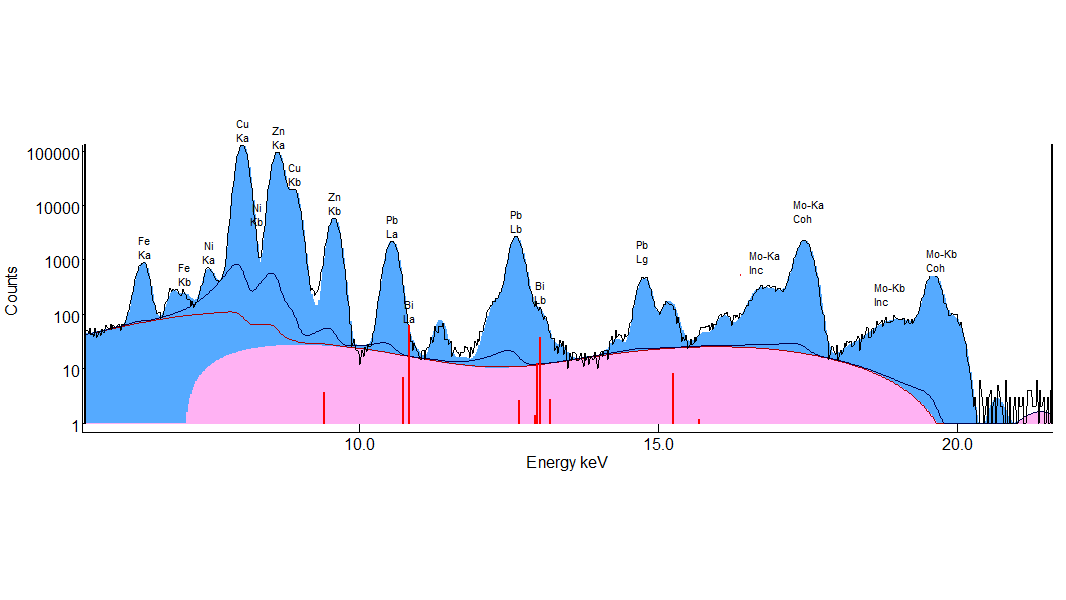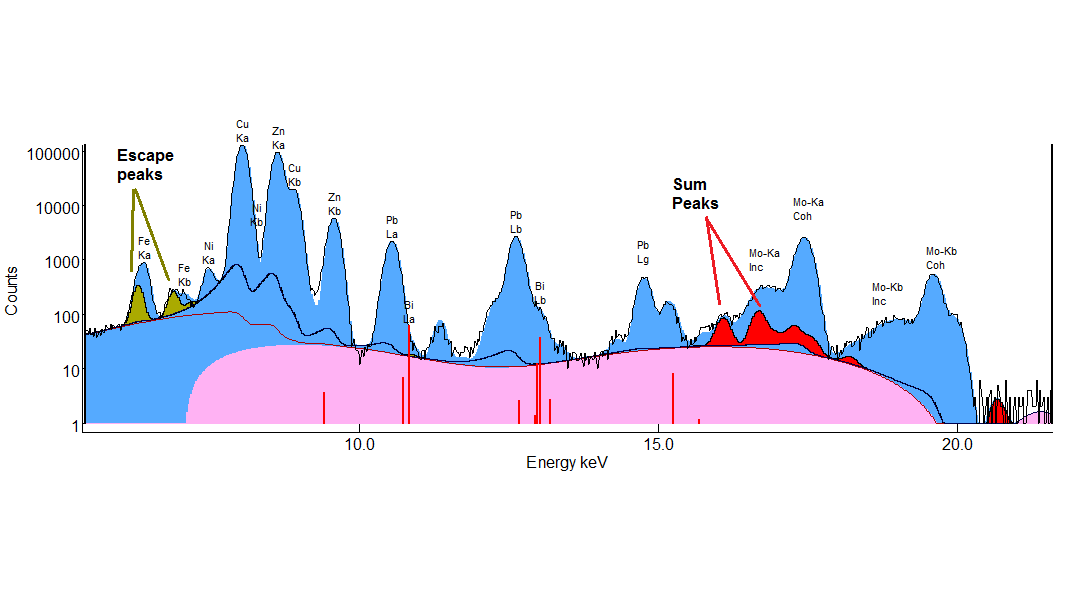4.4 Escape and sum peaks
The measured spectrum can contain other peaks that do not correspond to the emission of a particular element and should be considered as spectral interferences. When the intensity of a particular emission line is high, two other types of peaks can be present in the spectrum: escape peaks and sum peaks.
Escape peaks originate when one of the x-ray fluorescence photons produced in the sample by the primary excitation is detected and part of the charge that is generated in the detector is absorbed due to the ionization of one atom of the detector material (Si or Ge). The generated Si-Kα (or Ge-Kα/β) x-ray succeeds in escaping the detector volume without depositing back its energy. In that event the original x-ray is detected with energy equal to its characteristic energy minus the energy of the escaping photon. For Si detectors the difference in energy equals to that of Si-Kα(1.742 keV), whereas in the case of Ge detectors, escape peaks are detected either at E - 9.876 keV (Ge-Kα) or E-10.984 (Ge-Kβ). This effect occurs with low probability, and it is observed only for high intensity peaks.
If x-rays of a particular energy are very intense, there is the possibility of two photons arriving to the detector almost at the same time (e.g. within an interval of time shorter than that required for the production / collection of charge). In that case, the collected charge produces a pulse proportional to the sum of the energies of the two incident photons.

In case of observing high intensity peaks in the measured spectra, escape and sum peaks must be considered within the spectrum fitting models.

